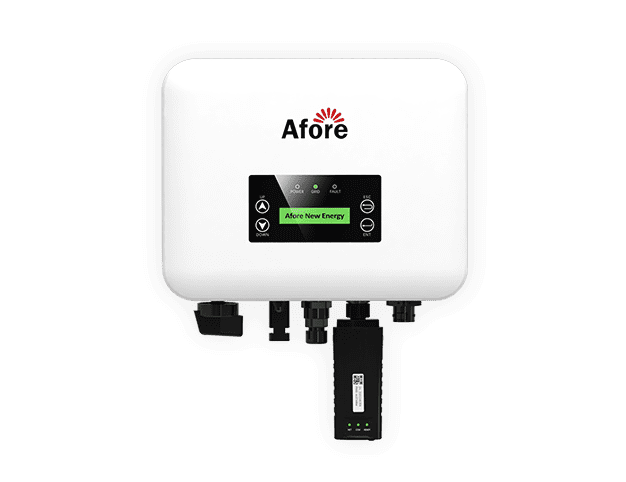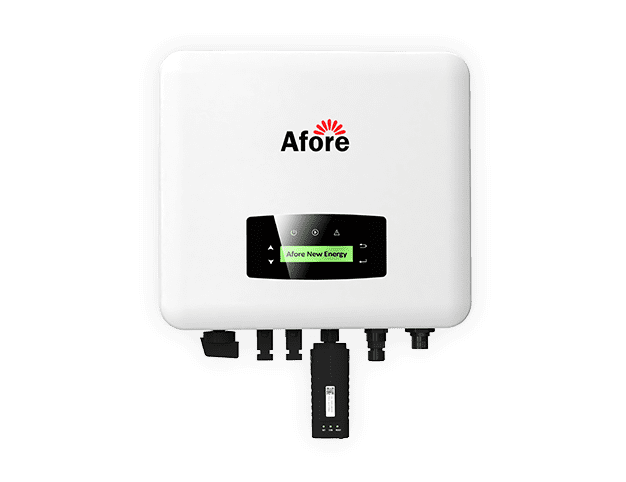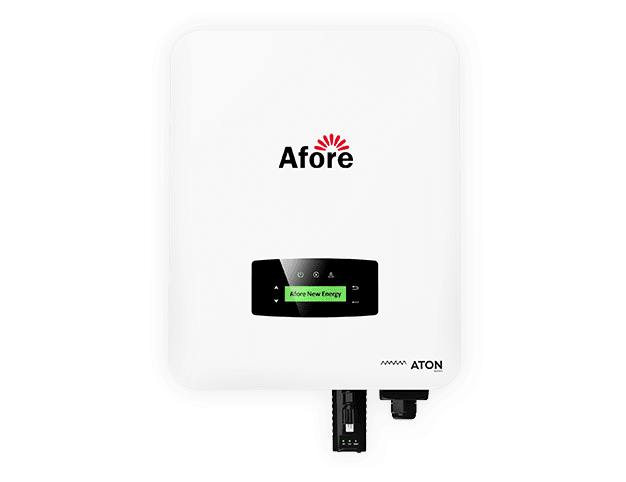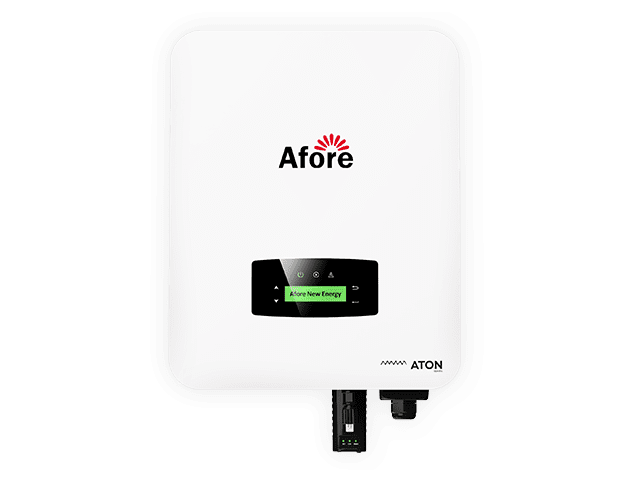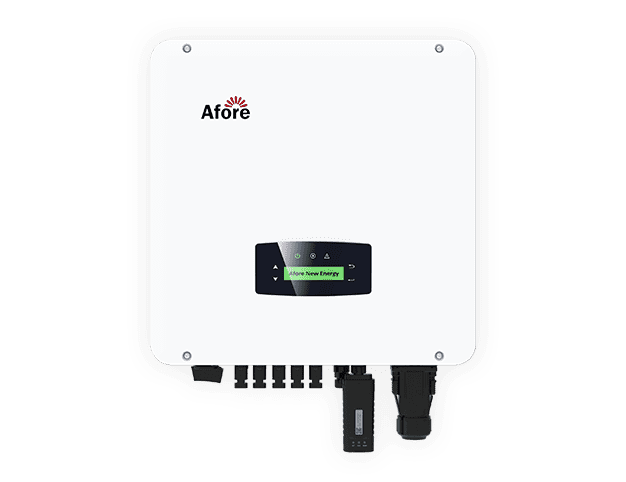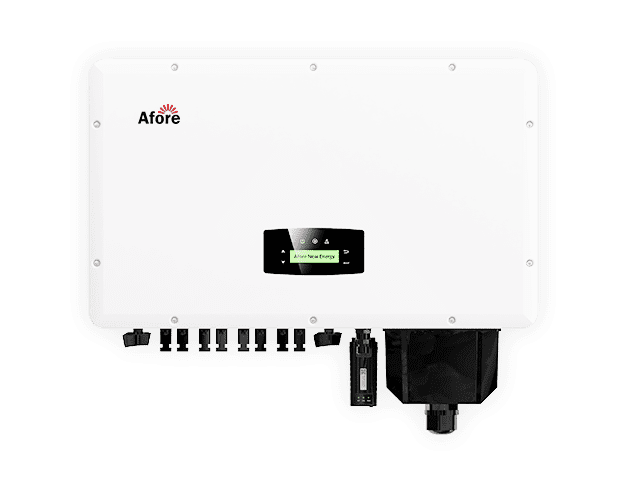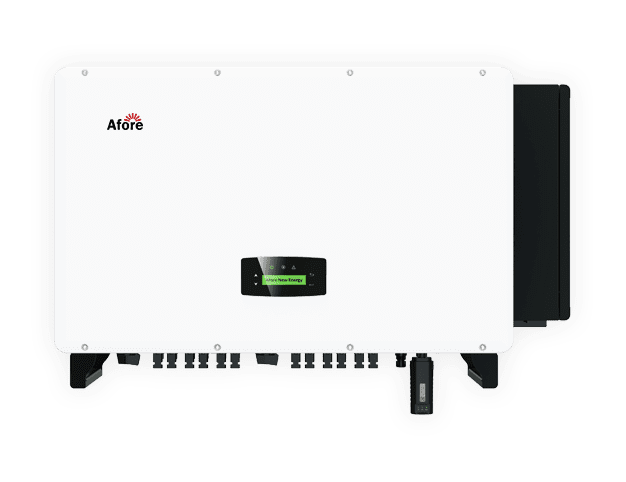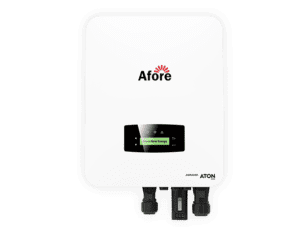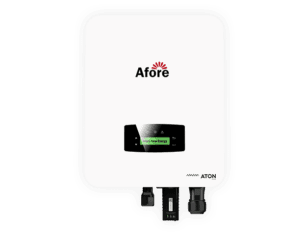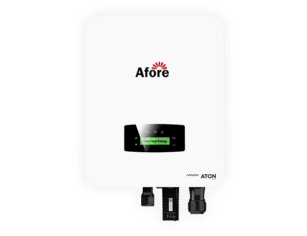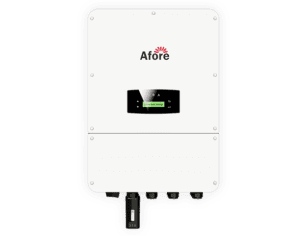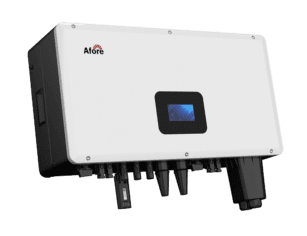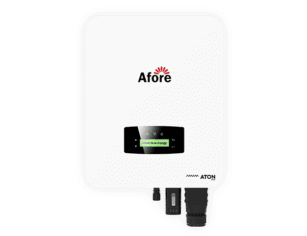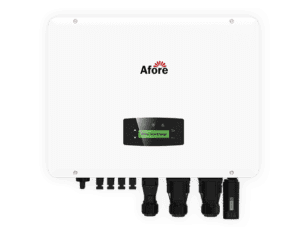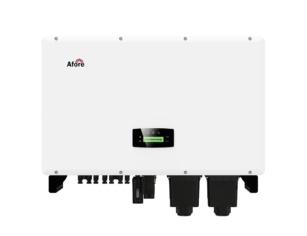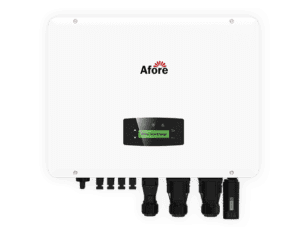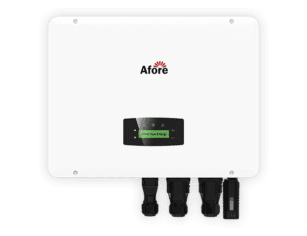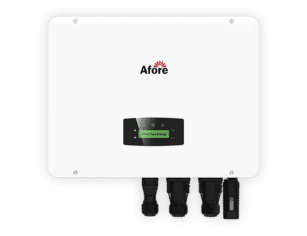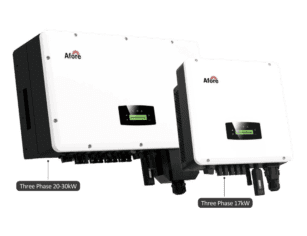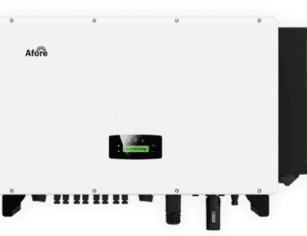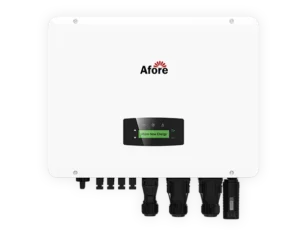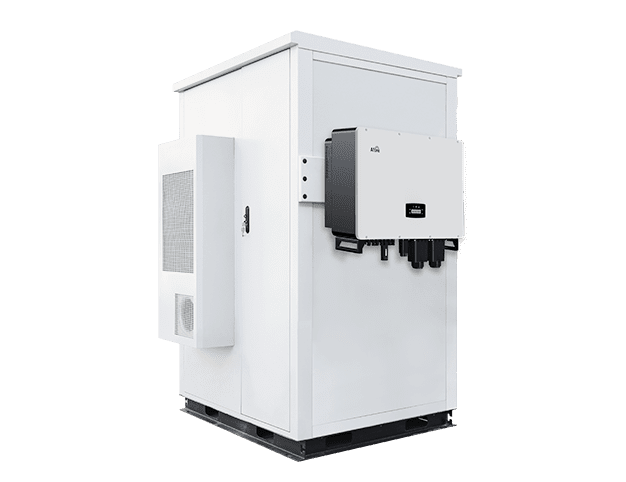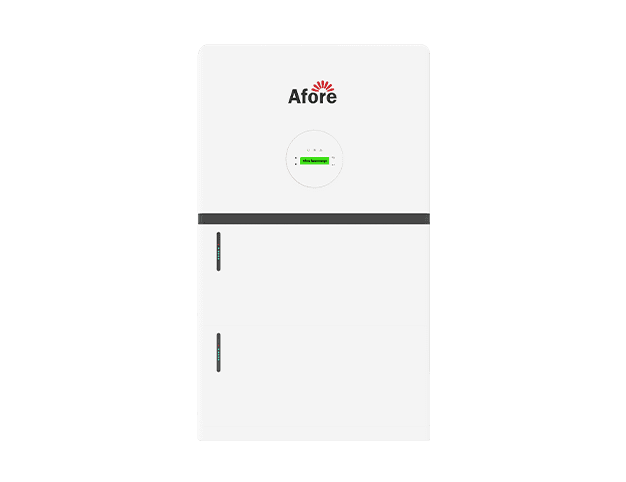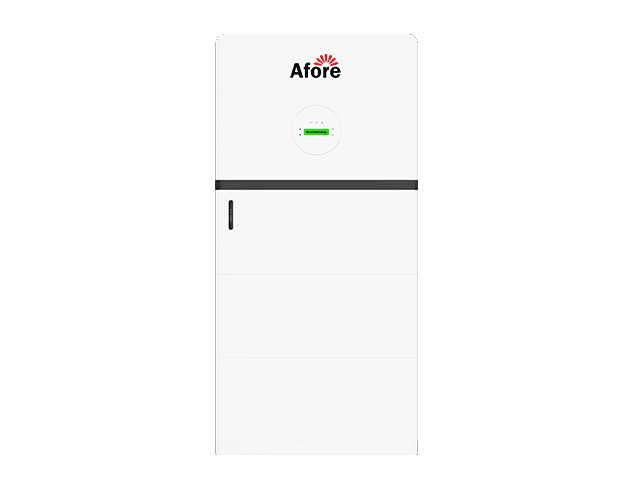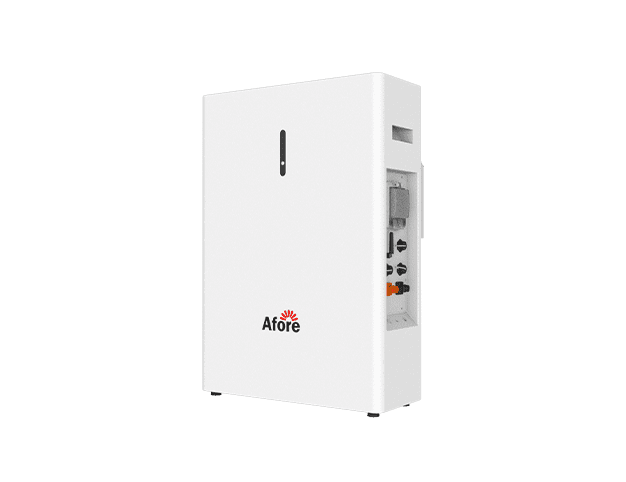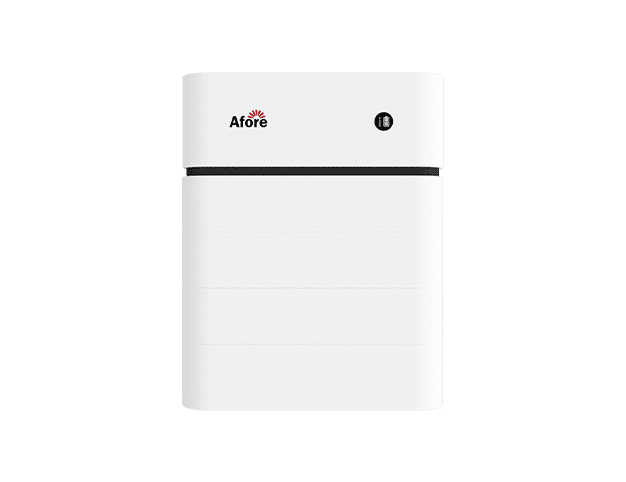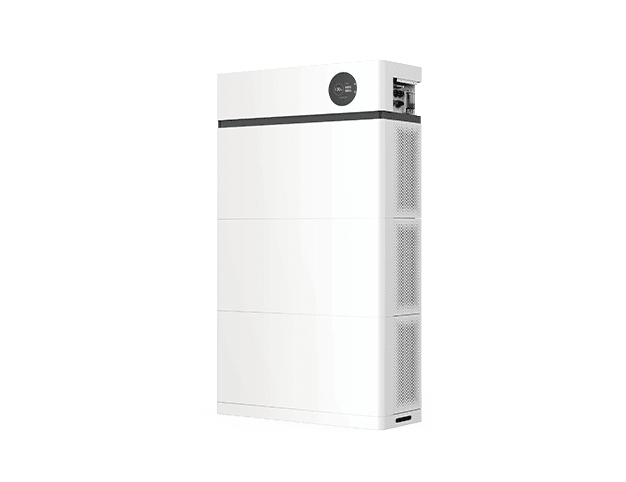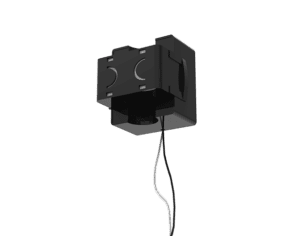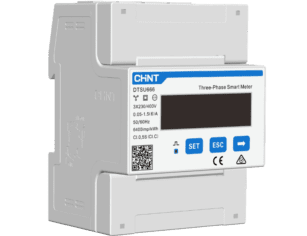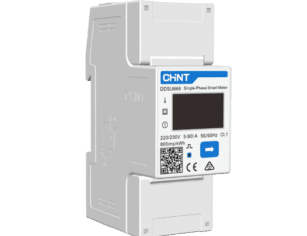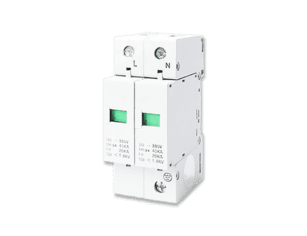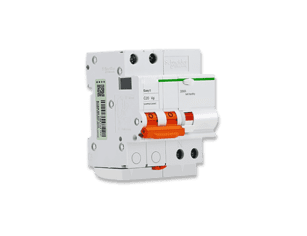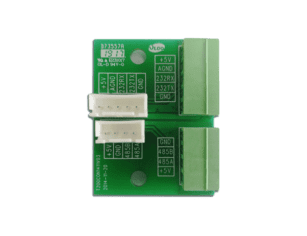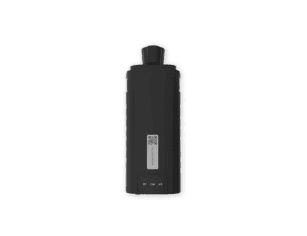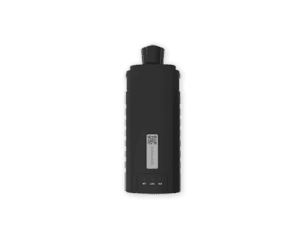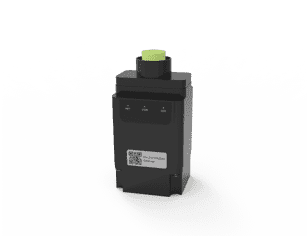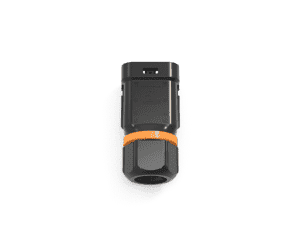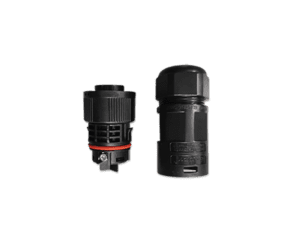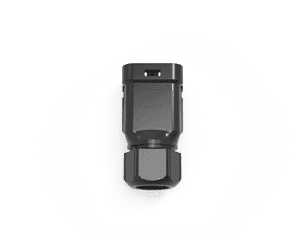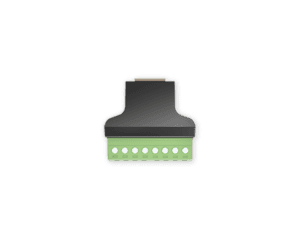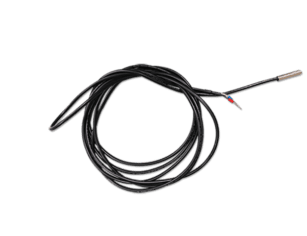Інвертор для телевізора: Повний посібник для живлення телевізора в будь-якому місці
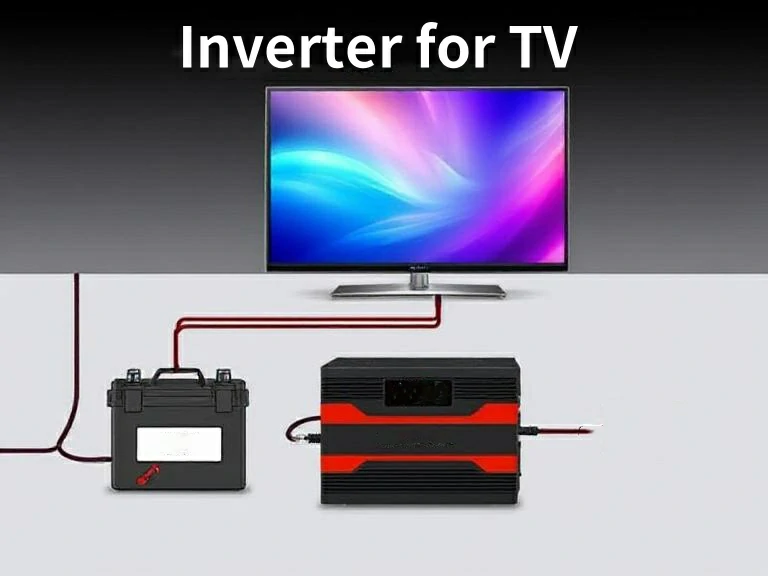
Зміст
Хочете дивитися улюблені шоу поза мережею, в автофургоні або під час відключення електроенергії? Правильний вибір інвертора для телевізора - це ключ до того, щоб зробити це без перебоїв або пошкодження вашої електроніки. Незалежно від того, чи налаштовуєте ви інвертор живлення для телевізора вдома, чи намагаєтеся з'ясувати, чи потрібне спеціальне обладнання для 12-вольтового телевізора у вашому автофургоні, цей посібник охоплює все, що вам потрібно. Від вибору найкращого інвертора для телевізора на основі потужності до розуміння того, як довго ваш телевізор працюватиме від одного інвертора, ми маємо відповіді на всі ваші запитання - чіткі та практичні.
Розуміння основ використання інвертора для телевізора
Що таке інвертор для телевізора?
За своєю суттю, інвертор для телевізора - це пристрій, який перетворює енергію постійного струму (DC) - зазвичай від батарей або сонячних панелей - на енергію змінного струму (AC), яка необхідна для роботи більшості телевізорів. У той час як будинки, природно, підключені до електромережі для подачі змінного струму, для роботи звичайних побутових приладів, таких як телевізор, в автономному режимі, наприклад, в автофургоні, човні або віддаленій каюті, потрібен інвертор.
Коли ви чуєте термін "інвертор для телевізора", думайте про нього як про посередника, який гарантує, що ваш телевізор отримає саме ту електроенергію, на яку він розрахований. Без нього підключення телевізора з живленням від мережі змінного струму безпосередньо до 12-вольтової батареї не тільки не забезпечить його живлення, але й може пошкодити пристрій. Ось чому вибір правильного інвертора живлення для телевізора дуже важливий при плануванні будь-якої мобільної або автономної розважальної системи.
Крім того, різні телевізори мають різні вимоги до енергоспоживання. 32-дюймовий LED-телевізор може споживати лише від 50 до 70 Вт, тоді як більший плазмовий екран може тягнути 200 Вт і більше. Ця різниця робить надзвичайно важливим правильний вибір розміру інвертора, про що ми детально поговоримо пізніше.
Чи можете ви запустити телевізор на 12В?
Так, ви можете запустити телевізор на 12 В, але це залежить від типу телевізора, який ви використовуєте.
Деякі телевізори спеціально розроблені для роботи від мережі 12 В постійного струму. Вони особливо поширені в караванах, човнах і будинках на колесах. Насправді, моделі телевізорів на 12 вольт стали популярними серед людей, які живуть на колесах, тому що їм зовсім не потрібен інвертор. Замість цього вони підключаються безпосередньо до 12-вольтової акумуляторної батареї і оптимізовані для енергоефективності.
Але що робити, якщо ваш телевізор не розрахований на 12В? Саме тут інвертор для телевізора стає незамінним помічником. Стандартні побутові телевізори розраховані на 110 або 230 В змінного струму, залежно від вашого регіону. Спроба увімкнути такий телевізор безпосередньо від 12-вольтової мережі просто не спрацює - вам знадобиться інвертор, щоб подолати цей розрив.
Отже, хоча телевізори з живленням від 12 вольт є чудовим рішенням з низьким енергоспоживанням, якщо ваша система це підтримує, більшість людей все ще покладаються на інвертор для живлення своїх стандартних телевізорів в автономних сценаріях.
Чому варто використовувати інвертор для телевізора замість прямого живлення 12 В?
Якщо доступна модель телевізора на 12 вольт, навіщо використовувати інвертор замість нього?
1. Ширший вибір телевізорів
Не всі телевізори доступні у версіях на 12 В. Більшість телевізорів високої чіткості, смарт-телевізорів і телевізорів з великими екранами потребують стандартного живлення від мережі змінного струму. Якщо ви хочете скористатися перевагами сучасних функцій, таких як вбудовані потокові додатки, порти HDMI або роздільна здатність 4K, вам, швидше за все, потрібна модель з живленням від мережі змінного струму. Це означає, що вам знадобиться інвертор живлення для телевізора, щоб працювати від мережі.
2. Підвищена стабільність живлення
Високоякісний інвертор для телевізора забезпечує чисте, стабільне живлення, часто у вигляді чистої синусоїди. Це дуже важливо, оскільки деяка чутлива електроніка, наприклад, смарт-телевізори або саундбари, може вийти з ладу або навіть пошкодитися під впливом "брудних" або модифікованих синусоїдальних сигналів. На противагу цьому, пряме джерело живлення 12 В може регулювати напругу не так стабільно.
3. Інтегровані енергетичні системи
Багато сонячних систем для будинків на колесах та позамережевих сонячних систем вже мають інвертори, що дозволяє легко живити різноманітні прилади змінного струму. Замість того, щоб купувати спеціалізований телевізор на 12 вольт, ви можете просто використовувати наявну систему зі стандартним телевізором, за умови, що ваш інвертор має відповідну потужність.
4. Покращена гнучкість оновлення
Припустимо, ви вирішили оновити свій 24-дюймовий екран до 50-дюймового смарт-телевізора. Знайти більшу модель телевізора на 12 вольт може бути складно або дорого. Але якщо ви вже використовуєте інвертор живлення для телевізора, ви можете оновити його, не змінюючи архітектуру системи.
Коротше кажучи, в той час як телевізори на 12 В можуть бути ефективними і зручними для простих налаштувань, використання інвертора для телевізора дає вам свободу використовувати будь-який телевізор, який ви хочете - плюс надійність і захист, які забезпечуються якісним перетворенням електроенергії.
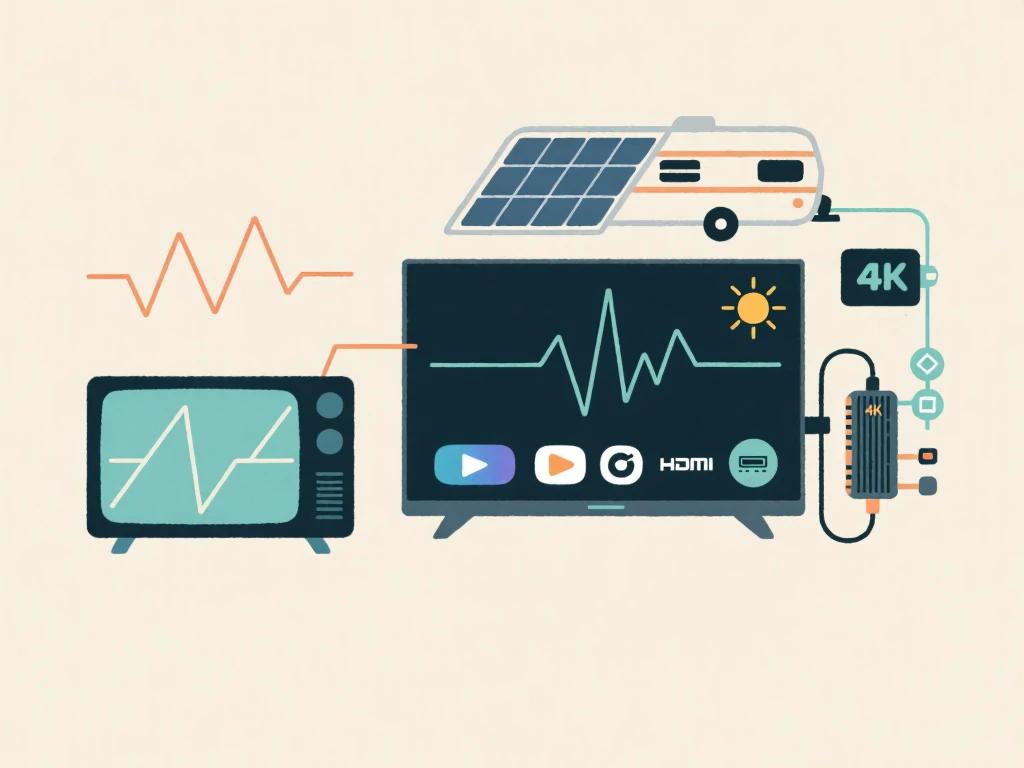
Вибір правильного інвертора для вашого телевізора
Який розмір інвертора потрібен для роботи телевізора?
Вибір правильного інвертора для телевізора - це не просто вибір першого-ліпшого інвертора на Amazon. Важливо, щоб вихідна потужність інвертора відповідала потребам вашого телевізора - плюс трохи більше вільного простору для дихання.
Більшість сучасних телевізорів споживають від 30 до 200 Вт, залежно від їхнього розміру та функцій. Наприклад, 32-дюймовому LED-телевізору може знадобитися близько 50 Вт, тоді як 55-дюймовий смарт-телевізор з усіма наворотами може споживати від 120 до 180 Вт. Однак пам'ятайте, що ці цифри відображають середній рівень використання. Під час запуску телевізору може знадобитися короткий сплеск додаткової потужності - так званий імпульсний режим.
Отже, як правильно вибрати інвертор живлення для телевізора?
Ось коротке емпіричне правило:
Потужність телевізора × 1,5 = мінімальна необхідна потужність інвертора.
Скажімо, ваш телевізор споживає 100 Вт. Помножте це на 1,5, і ви отримаєте 150 Вт. Отже, інвертор потужністю 150 Вт технічно може живити ваш телевізор. Але в реальності ви захочете підвищити потужність до 300 Вт, щоб забезпечити безпечну та ефективну роботу, особливо якщо ви одночасно використовуєте інші пристрої.
Також не забудьте врахувати всі підключені аксесуари - наприклад, потокову приставку, зовнішні колонки або DVD-програвач. Вони збільшують загальне навантаження і повинні бути враховані при виборі розміру інвертора.
Вибираючи інвертор для телевізора з невеликою додатковою потужністю, ви уникнете перевантаження системи і забезпечите довший термін служби як інвертора, так і телевізора.
Чи буде інвертор потужністю 400 Вт працювати з телевізором?
Так, інвертор потужністю 400 Вт працює з більшістю телевізорів - і досить комфортно.
Насправді, 400 Вт - це оптимальна потужність для багатьох автономних систем. Цього достатньо для роботи стандартного LED-телевізора, Roku або Fire Stick і, можливо, навіть невеликого саундбара. Якщо ви відпочиваєте в кемпінгу або живете у фургоні і хочете насолоджуватися Netflix під відкритим небом, 400-ватного інвертора для телевізора часто буває більш ніж достатньо.
Але є кілька важливих застережень:
- Тип телевізора має значення: Якщо ви використовуєте старий плазмовий телевізор, ви можете використовувати інвертор потужністю 400 Вт, оскільки такі телевізори, як правило, є енергоємними. Новіший світлодіодний або OLED-телевізор буде споживати набагато менше.
- Стартовий сплеск: Завжди враховуйте той факт, що деякі телевізори вимагають більше енергії під час запуску. Телевізор потужністю 120 Вт може ненадовго підскочити до 180 Вт при першому ввімкненні. Інвертор потужністю 400 Вт зазвичай легко справляється з цим стрибком, але завжди перевіряйте номінальну потужність інвертора, щоб бути впевненим.
- Інші пристрої, що працюють одночасно: Якщо ви плануєте підключити кілька пристроїв до одного інвертора, сумарна потужність стає критичною. Обмеження в 400 Вт означає, що всі підключені пристрої не повинні перевищувати цей сумарний поріг.
Коротше кажучи, якщо ви запитуєте: "Чи впорається інвертор потужністю 400 Вт з телевізором?", відповідь "так" - для більшості телевізорів, з деяким запасом. Просто переконайтеся, що ви перевірили свої конкретні налаштування, щоб уникнути сюрпризів.
Чистий синусоїдальний інвертор проти модифікованого синусоїдального інвертора
Вибираючи найкращий інвертор для телевізора, одним з найбільш важливих рішень, яке не беруть до уваги, є тип вихідної синусоїди: чиста синусоїда або модифікована синусоїда.
У чому різниця?
Інвертор чистої синусоїди
Цей тип виробляє плавну, чисту форму хвилі - дуже схожу на електрику, що подається з мережі. Він ідеально підходить для чутливої електроніки, як-от сучасні смарт-телевізори, аудіосистеми, ноутбуки та ігрові консолі. Інвертор чистої синусоїди для телевізора забезпечує оптимальну продуктивність і знижує ризик виникнення шуму, спотворень або пошкоджень.
Модифікований синусоїдальний інвертор
Вони більш бюджетні і добре працюють з базовою технікою. Однак вони виробляють більш переривчастий сигнал, що може спричинити проблеми з деякими телевізорами. Ви можете помітити мерехтіння екрану, гудіння з динаміків або навіть відмову пристрою вмикатися.
Який з них вибрати?
Якщо ваш телевізор відносно сучасний, особливо якщо він оснащений інтелектуальними функціями або пристроями, підключеними через HDMI, настійно рекомендується використовувати інвертор чистої синусоїди для телевізора. Він гарантує, що електроенергія, яка надходить до телевізора, буде стабільною та безпечною.
Модифіковані синусоїдальні інвертори все ще можуть працювати з простими телевізорами, але є один нюанс - вони можуть скоротити термін служби вашого пристрою або з часом спричинити прикрі проблеми з продуктивністю. Якщо ваш бюджет дозволяє, завжди вибирайте чисту синусоїду, особливо якщо ваш телевізор працює на 12 вольт і має багато підключеної електроніки.
Швидка порівняльна таблиця
| Особливість | Чиста синусоїда | Модифікована синусоїда |
| Ціна | Вище. | Нижній |
| Сумісність | Всі пристрої | Обмежений |
| Телевізійний перформанс | Плавно та безпечно | Може спричинити шум/проблеми |
| Енергоефективність | Вище. | Трохи нижче |
| Довговічність приладів | Краще | Скорочує термін служби |
Підсумовуючи: незалежно від того, чи живите ви телевізор від 12-вольтової мережі в кемпінгу, чи використовуєте повнорозмірний телевізор в автономному режимі, вибір правильного інвертора для телевізора має вирішальне значення. Думайте не лише про потужність - враховуйте форму сигналу, стійкість до перенапруги та ваші майбутні потреби. Від цього залежить ваш сеанс перегляду!
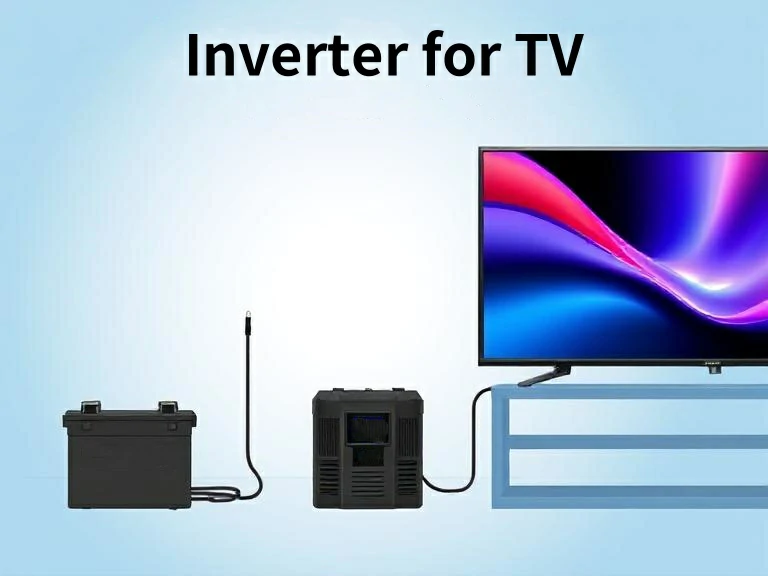
Як довго можна працювати з телевізором від інвертора?
Одне з найпоширеніших запитань під час створення автономної розважальної системи: "Як довго працюватиме мій телевізор від інвертора?". Хоча універсальної відповіді не існує, розуміння того, як ваш інвертор для телевізора, акумуляторна батарея і телевізор працюють разом, допоможе вам оцінити час роботи з набагато більшою точністю.
Незалежно від того, чи плануєте ви похід на вихідні, чи проектуєте сонячну установку для свого автофургона, знання того, як довго ви можете розраховувати на інвертор для телевізора, допоможе вам уникнути розрядки посеред фільму.
Розуміння тривалості роботи залежно від розміру акумулятора та інвертора
Щоб розрахувати, скільки часу триває Телевізор на 12 вольт Щоб установка могла працювати від інвертора, потрібно врахувати три ключові фактори:
- Енергоспоживання телевізора (у ватах)
- Коефіцієнт корисної дії інвертора (зазвичай 85%-95%)
- Ємність акумулятора (в ампер-годинах, або А-год)
Ось спрощена формула, яку ви можете використовувати:
Час роботи (в годинах) = (Ємність акумулятора × Напруга акумулятора × Ефективність інвертора) / Потужність телевізора
Пояснимо це на прикладі. Уявіть, що у вас є:
- Акумулятор глибокого циклу на 100 Ач 12 В
- Інвертор чистої синусоїди для телебачення з коефіцієнтом корисної дії 90%
- СВІТЛОДІОДНИЙ ТЕЛЕВІЗОР ПОТУЖНІСТЮ 60 ВТ
Математика виглядає так:
Час роботи = (100Ah × 12V × 0.9) / 60W
Тривалість ≈ 18 годин
Це означає, що теоретично телевізор може працювати близько 18 годин на повністю зарядженому акумуляторі ємністю 100 А-год, за умови, що ніщо інше не споживає енергію, а умови навколишнього середовища є ідеальними.
Важливе застереження: інвертори самі споживають енергію, навіть якщо до них не підключено жодного пристрою. Завжди враховуйте додатковий запас на споживання інвертора та стрибки напруги під час запуску телевізора. Також не розряджайте свинцево-кислотні акумулятори нижче 50%, якщо хочете зберегти здоров'я батареї.
Тепер, якщо ви використовуєте телевізор з напругою 12 вольт безпосередньо без інвертора, ви, природно, отримаєте довший час роботи, оскільки ви пропускаєте процес перетворення енергії, що зменшує її втрати.
Але використання інвертора для телевізора дозволяє живити стандартні побутові телевізори з напругою 120 або 230 В, надаючи вам більшу гнучкість і сумісність з сучасними смарт-телевізорами.
Як довго буде працювати телевізор на інверторі потужністю 1000 Вт?
1000-ватний інвертор для телевізора може легко впоратися практично з будь-яким телевізором, представленим на сучасному ринку. Насправді більшість телевізорів споживають набагато менше 1000 Вт - від 50 до 200 Вт, залежно від розміру і того, чи це звичайний світлодіодний екран, чи більш енергоємна OLED-модель.
Але справжнє питання не в тому, "чи може він живити телевізор?" (відповідь майже завжди "так"), а в тому, як довго?
Розглянемо два різні сценарії:
Сценарій 1: Базове налаштування
- Енергоспоживання телевізора: 100W
- Розмір інвертора: 1000 Вт
- Акумуляторна батарея: 12В, 100Ач
- Коефіцієнт корисної дії інвертора: 90%
Час роботи = (100Ah × 12V × 0.9) / 100W
Час виконання = 10.8 годин
Отже, навіть зі скромним акумулятором інвертор потужністю 1000 Вт може працювати з телевізором стандартного розміру понад 10 годин поспіль.
Сценарій 2: Велика установка зі смарт-телевізором та додатковими функціями
- Використання телевізора: 180 Вт (великий смарт-телевізор)
- Плюс: стрімінгова приставка (10 Вт), саундбар (20 Вт)
- Загальне навантаження: ~210W
- Акумуляторна батарея: 12В, 150Ач
Час роботи = (150Ah × 12V × 0.9) / 210W
Час виконання ≈ 7.7 годин
Все ще досить добре для нічного перегляду Netflix або поїздки на вихідні поза мережею.
Що, якщо я використовую сонячну установку?
Чудове запитання. Якщо ваша батарея заряджається від сонячних панелей під час перегляду телевізора, час роботи потенційно може бути необмеженим, доки ви генеруєте достатньо енергії, щоб відповідати вашому споживанню. Ось де по-справжньому може стати в нагоді потужний інвертор для телевізора та сонячної системи.
Підсумкові думки про роботу інвертора потужністю 1000 Вт
- Інвертор потужністю 1000 Вт не означає, що він споживає 1000 Вт; це означає, що він може працювати до 1000 Вт.
- Більшість телевізорів використовують лише частину цієї потужності.
- Реальним обмеженням є розмір вашого акумулятора, а не інвертор.
Тож так, ви можете впевнено працювати з телевізором на 1000-ватному інверторі для телевізора, часто протягом кількох годин - і навіть довше, якщо використовувати більшу батарею або сонячну батарею.
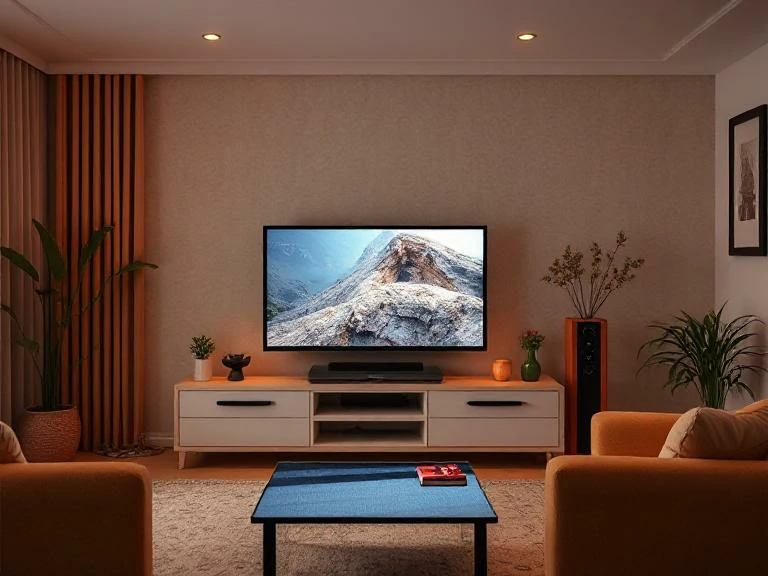
Типові помилки, яких слід уникати при використанні інвертора живлення для телевізора
Хоча налаштування інвертора для телевізора може здатися досить простим - підключіть його до мережі, увімкніть і розслабтеся, дивлячись улюблену передачу - існує кілька напрочуд поширених помилок, які можуть вплинути на продуктивність, марнотратство енергії або навіть пошкодити ваше обладнання. Незалежно від того, чи створюєте ви мобільну розважальну систему у своєму автофургоні, чи просто намагаєтеся залишатися у мережі під час відключень електроенергії вдома, уникнення цих помилок заощадить вам час, гроші та розчарування.
Давайте зануримося в те, чого не варто робити при використанні інвертора живлення для телевізора, і, що більш важливо, як уникнути кожної помилки.
Вибір неправильного розміру інвертора
Однією з найпоширеніших і найдорожчих помилок, яких припускаються люди, є вибір інвертора, який або занадто малий, або надмірно великий для їхнього телевізора.
Спокусливо думати: "Чим більше, тим краще", чи не так? Але у світі інверторів для телевізорів розмір повинен відповідати вашим потребам. Занадто малий - і ваш інвертор навіть не ввімкне телевізор. Занадто великий, і ви ризикуєте витратити енергію батареї через холостий хід і меншу ефективність при часткових навантаженнях.
Наприклад:
Якщо ваш телевізор споживає 100 Вт, вам не потрібен інвертор на 1500 Вт. Інвертор для телевізора потужністю 300-400 Вт чудово впорається з цим завданням. Надмірна потужність не тільки коштує дорожче, але й швидше розряджає батарею, коли інвертор працює неефективно при низькому навантаженні.
Завжди розраховуйте сумарну потужність вашого телевізора та будь-яких додаткових пристроїв, таких як саундбар, стрімінгова приставка або DVD-програвач. Потім додайте 20-30% запасу для стартових стрибків напруги. Це ваш цільовий розмір інвертора.
- Порада професіонала: Багато сучасних телевізорів споживають менше 150 Вт, а це означає, що 400-ватного інвертора часто більш ніж достатньо - просто переконайтеся, що це модель з чистою синусоїдою для повної сумісності.
Ігнорування ємності та типу акумулятора
Навіть маючи ідеальний інвертор для телевізора, ваша система працює настільки добре, наскільки якісний акумулятор. Недооцінка джерела живлення - або його невідповідність інвертору - може серйозно обмежити час роботи або призвести до пошкодження глибокими розрядами.
Люди часто запитують: "Як довго працює телевізор від інвертора?". Чесна відповідь: це повністю залежить від вашого акумулятора.
Припустимо, ви використовуєте батарею 12 В, 100 Ач з телевізором потужністю 90 Вт. На папері, ви можете отримати близько 12 годин перегляду. Але якщо ви використовуєте свинцево-кислотний акумулятор, не слід розряджати його нижче 50%. Це зменшує корисну потужність вдвічі.
Крім того, різні типи батарей поводяться по-різному:
- Свинцево-кислотні (AGM, гелеві): Дешевші, але важчі та менш ефективні.
- Літієві (LiFePO4): Дорожчий, але довший термін служби, глибший розряд і легший.
Якщо у вашому телевізорі 12-вольтової системи використовуються застарілі або невідповідні батареї, не має значення, наскільки ефективним є ваш інвертор для телевізора - ви розрядитеся швидше, ніж ви думаєте.
- Попередження про помилку: підключення невеликої акумуляторної батареї до потужного інвертора може призвести до падіння напруги, перегріву інвертора або повного вимкнення системи. Знайте межі можливостей вашого акумулятора.
Використання модифікованої синусоїди зі смарт-телевізорами
Не всі інвертори живлення для телевізорів однакові. Одним з основних моментів прийняття рішення є вибір між інверторами з модифікованою синусоїдою та інверторами з чистою синусоїдою. Ось чому це важливо - особливо якщо ви живите смарт-телевізор.
Модифікований синусоїдальний інвертор виробляє грубе, ступінчасте наближення змінного струму. Хоча стара базова електроніка може витримати це, багато сучасних телевізорів, особливо смарт-телевізорів з чутливими внутрішніми схемами, не зможуть або відмовляться працювати належним чином з таким типом живлення. Ви можете зіткнутися з цим:
- Спотворене аудіо або відео
- Перегрів силових цеглинок
- Мерехтливі екрани
- Скорочення тривалості життя телевізора
Натомість інвертор з чистою синусоїдою, навпаки, забезпечує чисту, стабільну енергію, яку ви отримуєте від стандартної розетки. Це те, чого очікує ваш телевізор, і те, що йому потрібно для безпечного та довготривалого використання.
- Помилка в реальному житті: Мандрівник купує бюджетний 600-ватний модифікований синусоїдальний інвертор для свого смарт-телевізора і саундбара. Спочатку здається, що він працює... але через кілька хвилин екран починає мерехтіти і вимикається. Після переходу на чистий синусоїдальний інвертор для телевізора проблема зникає.
Не дозволяйте дешевому інвертору ризикувати вашою дорогою розважальною технікою. Якщо ви вклали гроші в висококласний смарт-телевізор, то інвестиції в інвертор з чистою синусоїдою для телевізора просто не підлягають обговоренню.
Висновок
Рекомендації наших експертів
- Для будинків на колесах: Інвертор чистої синусоїди потужністю 400 Вт для телевізора або 12-вольтового телевізора
- Для домашнього резервного живлення: Інвертор на 1000 Вт з акумуляторами глибокого циклу
- Для автономних установок: Комбінація сонячна батарея + літієва батарея + інвертор
Незалежно від того, чи ви відпочиваєте на природі, чи готуєтеся до перебоїв в електропостачанні, чи збираєтеся повністю відключитися від електромережі, правильний інвертор для телевізора має важливе значення. Оцініть свої потреби, виміряйте навантаження та обирайте якісний продукт. Це більше, ніж просто перегляд Netflix - це про душевний спокій. Крім того, якщо ви хочете дізнатися про домашні сонячні рішення або комерційні сонячні рішення, ви можете відвідати Afore, один з провідних виробники сонячних інверторів у світі.
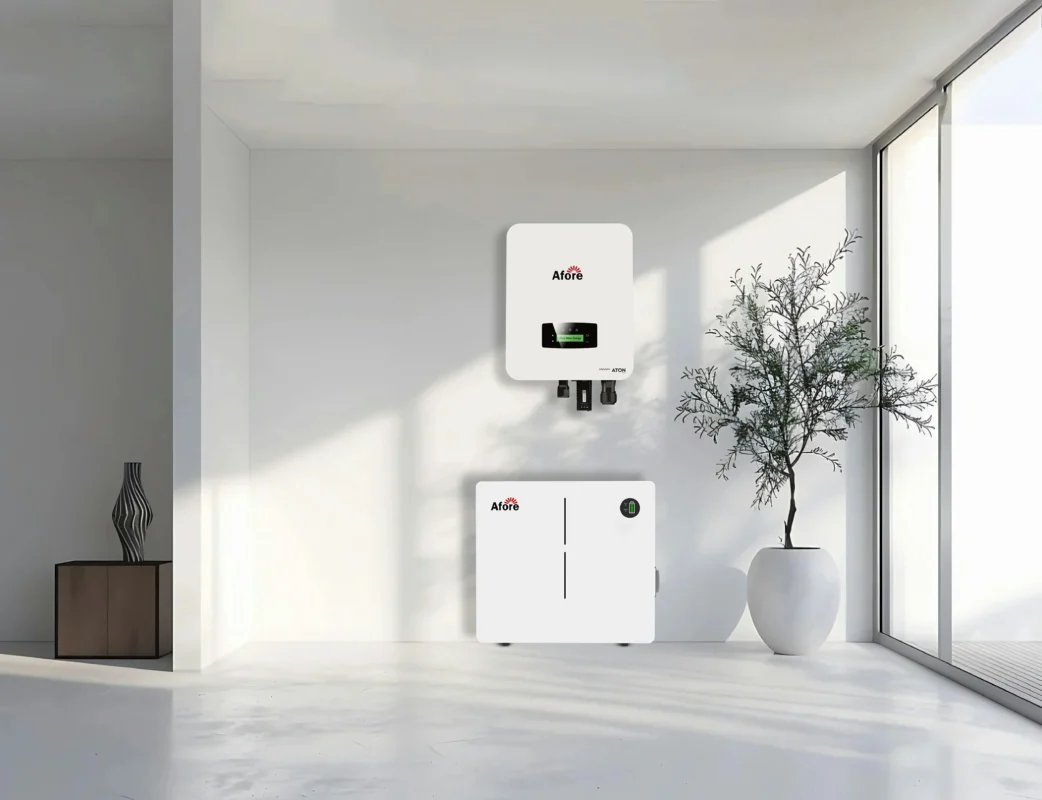
Поширені запитання про інвертор для телевізора
Чи можете ви запустити телевізор на 12В?
Так, саме так. Багато компактних телевізорів працюють безпосередньо від 12 В постійного струму, особливо ті, що призначені для будинків на колесах або караванів. Вони часто продаються як TV en 12 volt, призначені для підключення безпосередньо до автомобільного акумулятора або розетки прикурювача.
Однак, якщо ваш телевізор є стандартною побутовою моделлю, яка потребує живлення від мережі змінного струму, вам знадобиться інвертор для телевізора, який перетворить 12 В постійного струму від акумулятора в придатний для використання змінний струм 110 В або 220 В.
Отже, коротка відповідь? Так, але це залежить від телевізора. Якщо це не конкретно телевізор на 12 вольт, вам знадобиться хороший інвертор живлення для телевізора, щоб він працював.
Що таке інвертор для телевізора?
Інвертор для телевізора - це пристрій, який перетворює постійний струм (DC) від акумулятора - зазвичай 12 або 24 В - на змінний струм (AC), необхідний для роботи більшості стандартних телевізорів.
Уявіть собі, що це ваш автономний енергоміст. Незалежно від того, чи використовуєте ви сонячну енергію, акумулятор автомобіля або навіть портативну електростанцію, інвертор для телевізора дозволить вам живити ваш улюблений розважальний пристрій, коли ви знаходитесь далеко від електромережі.
- Інвертор з чистою синусоїдою для телевізора - найкращий вибір, особливо для сучасних смарт-телевізорів, оскільки він забезпечує чисте і стабільне живлення, подібне до того, що надходить від побутової розетки.
Чи можна підключити телевізор до інвертора?
Так, ви можете. Насправді, тисячі людей роблять це щодня у своїх кемперах, каютах і навіть будинках під час відключень електроенергії.
Все, що тобі потрібно:
- ТЕЛЕВІЗОР
- Батарея
- Правильний інвертор для телевізора
- І базові знання про потужність і споживану потужність
Підберіть розмір інвертора відповідно до потужності вашого телевізора (плюс деякий запас по висоті), і все буде готово до роботи. Просто переконайтеся, що інвертор для телевізора подає чисту енергію - ідеально чисту синусоїду - і що ваша батарея має достатньо заряду, щоб впоратися з навантаженням.
Як довго буде працювати телевізор від інвертора?
Це залежить від двох основних факторів:
- Енергоспоживання вашого телевізора (зазвичай 60-150 Вт)
- Розмір і тип вашого акумулятора (вимірюється в А-год)
Ось короткий приклад:
Акумулятор ємністю 100Ач 12В має близько 1200 Вт-год корисної енергії (якщо літієвий) або 600 Вт-год (якщо свинцево-кислотний з глибиною розряду 50%). Телевізор потужністю 100 Вт буде працювати:
- 6 годин на свинцевій кислоті
- 12 годин на літієвому акумуляторі
Звичайно, якщо ви додасте інші пристрої або використаєте менш ефективний інвертор для телевізора, час роботи зменшиться.
- Порада професіонала: Завжди розраховуйте з буфером 15-20% на випадок втрати інвертора і запуску від перенапруги. Навіть найкращий інвертор живлення для телевізора має певну неефективність.
Чи буде інвертор потужністю 400 Вт працювати з телевізором?
У більшості випадків - так. Інвертора потужністю 400 Вт для телевізора зазвичай більш ніж достатньо для роботи LED-телевізорів, які часто споживають від 60 до 150 Вт.
Однак вам потрібно врахувати розмір телевізора, ефективність бренду та будь-які додаткові пристрої (наприклад, флешки Roku або ігрові приставки). Крім того, переконайтеся, що ваш інвертор для телевізора має чисту синусоїду, щоб забезпечити сумісність з усіма брендами та моделями.
Інвертори потужністю 400 Вт також компактні та ефективні, що робить їх ідеальним рішенням для невеликих автофургонів або аварійних комплектів.
Який розмір інвертора потрібен для 55-дюймового телевізора?
55-дюймовий LED-телевізор зазвичай споживає від 100 до 160 Вт, залежно від марки та моделі. Для безпеки рекомендується використовувати інвертор для телевізора потужністю від 300 до 500 Вт для 55-дюймового пристрою.
Обов'язково:
- Використовуйте інвертор живлення чистої синусоїди для телевізора
- Залиште 20-30% запас міцності на час запуску
- Враховуйте будь-які аксесуари (звукові системи, HDMI-пристрої)
Не орієнтуйтеся лише на розмір екрана - перевірте вимоги до потужності на етикетці на задній панелі телевізора або в посібнику користувача.
Чи можна використовувати кілька пристроїв з телевізором, підключеним до інвертора?
Так, але вам потрібно підсумувати загальну потужність і переконатися, що ваш інвертор може з нею впоратися.
Наприклад:
- 55-ДЮЙМОВИЙ ТЕЛЕВІЗОР = 130 ВТ
- Звукова панель = 40 Вт
- Стримінгова приставка = 10 Вт
- Світлодіодні лампи = 20 Вт
Всього = 200 Вт
У цьому випадку інвертор для телевізора на 400 Вт легко впорається з усім. Але не забудьте врахувати ємність акумулятора - робота декількох пристроїв розряджає більше енергії, причому швидше.
Використання високоякісного інвертора для телевізора із захистом від перенапруги та достатньою потужністю має вирішальне значення, якщо ви плануєте живити не лише екран.
Що станеться, якщо я використаю модифікований синусоїдальний інвертор з телевізором?
Тут все стає складніше. Якщо старі ЕПТ або найпростіші плоскі екрани можуть працювати з модифікованим синусоїдальним інвертором, то сучасні смарт-телевізори часто реагують погано або взагалі не реагують.
Проблеми включають в себе:
- Мерехтливі екрани
- Звуковий сигнал
- Збої у відтворенні відео
- Перегрів внутрішніх контурів
- Потенційна довгострокова шкода
Інвертор чистої синусоїди для телевізора імітує плавний потік живлення від електромережі і є 100% безпечним для вашої електроніки. Не ризикуйте своїм дорогим телевізором заради дешевого інвертора - воно того не варте.
Що краще - купити телевізор на 12 В або використовувати інвертор?
Це залежить від вашої ситуації.
Телевізор на 12 вольт розроблений спеціально для трейлерів, човнів та кемперів. Він енергоефективний, легко живиться безпосередньо від 12-вольтової батареї і не потребує інвертора.
Однак, як правило, телевізори на 12 В:
- Дорожче
- Менший за розміром екрану
- Обмеженість у функціях порівняно з побутовими телевізорами
Якщо у вас вже є звичайний телевізор або ви хочете щось більше з інтелектуальними функціями, має сенс інвестувати в якісний інвертор живлення для телевізора. Він дає вам більше гнучкості, особливо в поєднанні з хорошим акумулятором.
- Найкраще з обох світів: використовуйте телевізор на 12 В, коли розмір і ефективність мають найбільше значення; використовуйте стандартний телевізор з інвертором для телебачення, коли вам потрібні повні функції і ви не проти невеликої втрати енергоефективності.
Який найбільш енергоефективний спосіб дивитися телевізор поза мережею?
Ось як дивитися телевізор в автономному режимі, не виснажуючи систему:
- Використовуйте світлодіодний телевізор або телевізор на 12 вольт з низьким енергоспоживанням
- Поєднуйте його з інвертором чистої синусоїди для телевізора з ККД 90%+.
- Використовуйте літієві батареї для більш глибокої розрядки та довшого часу роботи
- Вимкніть режими очікування та непотрібні периферійні пристрої (наприклад, ігрові приставки)
- Встановлення сонячних панелей для поповнення заряду батареї протягом дня
Ефективність залежить від правильної комбінації обладнання. Завеликий інвертор або неефективна батарея скоротять час роботи. Розумне планування = довші вечори кіно.




